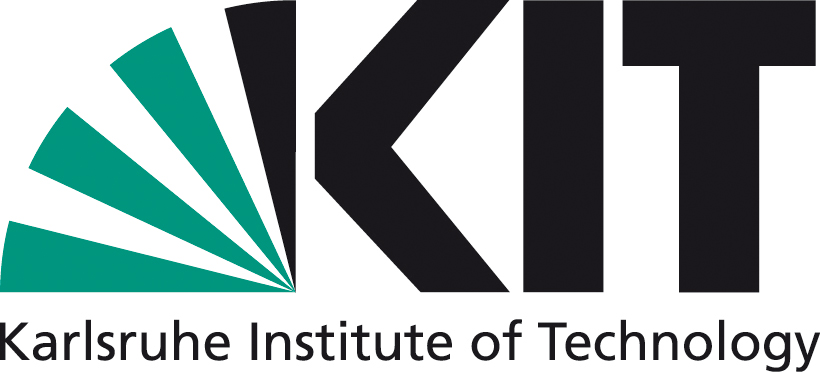Transition pathways for the European building sector: Comparison of environmental savings from sufficiency, consistency, and efficiency measures
DOI:
https://doi.org/10.14512/tatup.31.2.32Keywords:
sufficiency, consistency, efficiency, buildings, emissionsAbstract
This article addresses the lack of data about the environmental savings potential of sufficiency measures in the European building sector by using the EUCalc tool. The savings potentials of different sufficiency, consistency, and efficiency measures in the impact categories greenhouse gas emissions, energy, and renewable as well as non-renewable resources are calculated. With sufficiency measures, a total of 16% of GHG emissions can be saved compared to an EU past trends scenario. Efficiency and consistency measures save 31% and 22%, respectively. The most effective sufficiency measure is a reduction of living space per capita. The results vary between the impact categories studied.
References
Association négaWatt (ed.) (2018): Energy sufficiency. Towards a more sustainable and fair society. Available online at https://www.negawatt.org/energy-sufficiency, last accessed on 02. 05. 2022.
Bierwirth, Anja; Thomas, Stefan (2015): Almost best friends – sufficiency and efficiency. Can sufficiency maximise efficiency gains in buildings? ECEEE 2015 summer study. Available online at https://nbn-resolving.org/urn:nbn:de:bsz:wup4-opus-59318, last accessed on 02. 05. 2022.
Climate Media Factory UG (n.d.): EUCalc. European Calculator. Available online at http://tool.european-calculator.eu/intro, last accessed on 02. 05. 2022.
Clora, Francesco; Yu, Wusheng (2020): EU Calculator – WP7. Transboundary effects module documentation. Available online at www.european-calculator.eu/wp-content/uploads/2020/04/EUCalc_Transboundary_documentation.pdf, last accessed on 02. 05. 2022.
Cordroch, Luisa; Hilpert, Simon; Wiese, Frauke (2021): Why renewables and energy efficiency are not enough. The relevance of sufficiency in the heating sector for limiting global warming to 1.5°C. In: Technological Forecasting and Social Change (175), p. 121313. DOI: https://doi.org/10.1016/j.techfore.2021.121313
Capros, Pantelis et al. (2016): EU reference scenario 2016. Energy, transport and GHG emissions – trends to 2050. Luxembourg: Publications Office of the European Union.
Costa, Luís et al. (2021): The decarbonisation of Europe powered by lifestyle changes. In: Environmental Research Letters 16 (4), p. 044057. DOI: https://doi.org/10.1088/1748-9326/abe890
Deutscher Städtetag (ed.) (2021): Nachhaltiges und suffizientes Bauen in den Städten. Berlin: Deutscher Städtetag Berlin und Köln.
European Commission (2018): In-depth analysis in support on the COM (2018) 773. A clean planet for all. A European long-term strategic vision for a prosperous, modern, competitive and climate neutral economy (in-depth analysis in support of the Commission Communication COM (2018) 773). Brussels: European Commission.
European Commission (2020a): In focus. Energy efficiency in buildings. Brussels: European Commission. Available online at https://ec.europa.eu/info/sites/default/files/energy_climate_change_environment/events/documents/in_focus_energy_efficiency_in_buildings_en.pdf, last accessed on 02. 05. 2022.
European Commission (2020b): A renovation wave for Europe. Greening our buildings, creating jobs, improving lives. Brussels: European Commission.
ECJRC – European Commission, Joint Research Centre (2021): New European Bauhaus. About the initiative. Available online at https://europa.eu/new-european-bauhaus/about/about-initiative_en, last accessed on 02. 05. 2022.
ECSOEU – European Commission; Statistical Office of the European Union (2020): Energy, transport and environment statistics. 2020 edition. Luxem-bourg: Publications Office of the European Union.
EPCEU – European Parliament; Council of the European Union (2021): Directive 2010/31/EU of the European Parliament and of the Council of 19 May 2010 on the energy performance of buildings (recast). Brussels: European Commission.
Fischer, Corinna; Grießhammer, Rainer (2013): Mehr als nur weniger – Suffizienz. Begriff, Begründung und Potenziale. Öko-Institut Working Paper 2/2013. Freiburg: Öko-Institut. Available online at: https://www.oeko.de/publikationen/p-details/mehr-als-nur-weniger-suffizienz-begriff-begruendung-und-potenziale, last accessed on 02. 05. 2022.
Grubler, Arnulf et al. (2018): A low energy demand scenario for meeting the 1.5°C target and sustainable development goals without negative emission technologies. In: Nature Energy 3 (6), pp. 515–527. DOI: https://doi.org/10.1038/s41560-018-0172-6
Kruit, Katja et al. (2020): Zero carbon buildings 2050. Background report. Available online at https://policycommons.net/artifacts/1999878/zero-carbon-buildings-2050/2751643, last accessed on 02. 05. 2022.
Kuhnhenn, Kai; Costa, Luis; Mahnke, Eva; Schneider, Linda; Lange, Steffen (2020): A societal transformation scenario for staying below 1.5°C. Berlin: Heinrich Böll Foundation and Konzeptwerk neue Ökonomie.
Over, Margarete; Zimmermann, Patrick; Brischke, Lars-Arvid (2021): Wie muss man bauen, um suffizientes Wohnen zu ermöglichen? In: Proceedings of 26th Interdisziplinäre Wissenschaftlichen Konferenz Mittweida, 6 p. Mittweida: s.n.
Pestiaux, Julien et al. (2019): Introduction to the EUCalc model. Cross-Sectoral Model description and documentation. Available online at www.european-calculator.eu/wp-content/uploads/2019/09/EUCalc_Cross-Sectoral_description_September2019.pdf, last accessed on 02. 05. 2022.
PIK – Potsdam Institute for Climate Impact Research (n.d.): EUCALC. Explore sustainable European futures. Available online at https://www.european-calculator.eu, last accessed on 02. 05. 2022.
Price, Jeff; Warren, Rachel; Forstenhaeusler, Nicole; Jenkins, Stuart (2019): EU Calculator: WP1. Climate and emissions module documentation. Availa-ble online at https://www.european-calculator.eu/wp-content/uploads/2019/09/EUCalc_Climate_documentation.pdf, last accessed on 02. 05. 2022.
Purr, Katja; Günther, Jens; Lehmann, Harry; Nuss, Philip (2019): Wege in eine ressourcenschonende Treibhausgasneutralität. RESCUE-Studie. Des-sau-Roßlau: Umweltbundesamt.
Staniaszek, Dan; Kockat, Judit; Broer, Rutger; Álvarez, Xerome (2021): The road to climate-neutrality. Are national long-term renovation strategies fit for 2050? Brussels: BPIE.
Steinbach, Jan; Deurer, Jana (2021): Bewertung des CO2-Reduktionspotenzials ausgewählter Maßnahmen im Bereich Gebäude und Wohnen für das Land Bremen. Karlsruhe: IREES.
Sterchele, Philip et al. (2020): Wege zu einem klimaneutralen Energiesystem. Die deutsche Energiewende im Kontext gesellschaftlicher Verhaltenswei-sen. Freiburg: Fraunhofer-Institut für Solare Energiesysteme ISE.
Strapasson, Alexandre; Mwabonje, Onesmus; Woods, Jeremy; Baudry, Gino (2020): Pathways towards a fair and just net-zero emissions Europe by 2050. Insights from the EUCalc for carbon mitigation strategies. EUCalc Policy Brief (9), 53 p.
WBGU – German Advisory Council on Global Change (ed.) (2009): Solving the climate dilemma. The budget approach. Berlin: WBGU.
Zimmermann, Patrick (2018): Bewertbarkeit und ökobilanzieller Einfluss von Suffizienz im Gebäudebereich. (Masterthesis) Munich: TU Munich. Availa-ble online at https://mediatum.ub.tum.de/doc/1546825/1546825.pdf, last accessed on 02. 05. 2022.
Published
How to Cite
Issue
Section
License
Copyright (c) 2022 Patrick Zimmermann

This work is licensed under a Creative Commons Attribution 4.0 International License.








